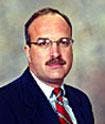Ultra Petroleum Corp. is a rapidly growing US independent based in Houston that focuses on its core assets in the Green River basin of southwestern Wyoming and in the shallow waters of Bohai Bay in China.
Ultra owns more than 188,000 gross acres in and around the prolific 25 sq mile Jonah natural gas field and the 100 sq mile Pinedale anticline area. It also holds interest in two massive oil exploration and development blocks in Bohai Bay.
Ultra has set its sights on increasing its proved reserves to at least 1 tcfe by yearend 2004.
Since 2000, Ultra has drilled 99 successful wells out of 103 total wells drilled.
Early beginnings
Ultra Chairman, Pres., and CEO Michael Watford told OGJ that the company was in a "bit of a ditch" and struggling in 1999 when he came on board. "It took us a while to turn the company around. It was definitely one of those turnaround situations where we had to reduce staff and reduce the number of offices," he said.
The independent's exploration program had been "largely unsuccessful," he explained. Instead, Watford concentrated the company's efforts in its core asset in Wyoming: Jonah field. "We were a little uncertain as to what the Pinedale anticline area was going to do for us, but we thought we had an easy 'double': the ability to double the size of the company just on the assets in Jonah field," Watford said.
Through 1999, Watford worked to "right the ship," which was achieved by early 2000, when two events changed Ultra's prospects for expansion.
The first was a reduction in well spacing in Jonah field to 40 acres/well from 80 acres/well. "So we could start drilling additional wells in Jonah field, and effectively we were able double our reserves over time and significantly increase production as we drilled those wells," Watford noted.
The second event was the finalization of the environmental impact statement for the Pinedale anticline area, which had seen limited drilling. "It was a 2-year process, which Ultra led, and it was completed in July of 2000. We could start drilling development wells on the Pinedale anticline for the first time," Watford said.
Gas prices
Watford said that he isn't overly concerned with natural gas price volatility. "With the resource base that we have in Wyoming, we make money at $1.50[/Mcf]. Our reinvestment opportunities are numerous," he said. "We already have 600 identified wells to drill, which at 55 wells/year would take us a decade [to drill]. At $2.50[/Mcf] gas, we have 40-50% rates of return," he said.
"We have no reinvestment risk in terms of our assets—that's what separates us from many of the other companies that may be rapidly growing but can't look out and see for the next 5-10 years where they're going to go. We can lay out the wells on the map and point to the ones we're going to drill.
"We can lay out the fields in China we've already discovered and point to how they're going to come on production in the next 6-7 years. So we already have a plethora of very high rate-of-investment opportunities for usUthat are certainly sensitive to commodity pricing, but [at] $10/bbl oil in Bohai Bay, we still make a 19% return [on investment]," Watford said.
The company also resorts to hedging to protect capital for growth, Watkins said: "So if natural gas prices are lower in the short term for us, it means we grow slower; it doesn't mean we don't grow."

